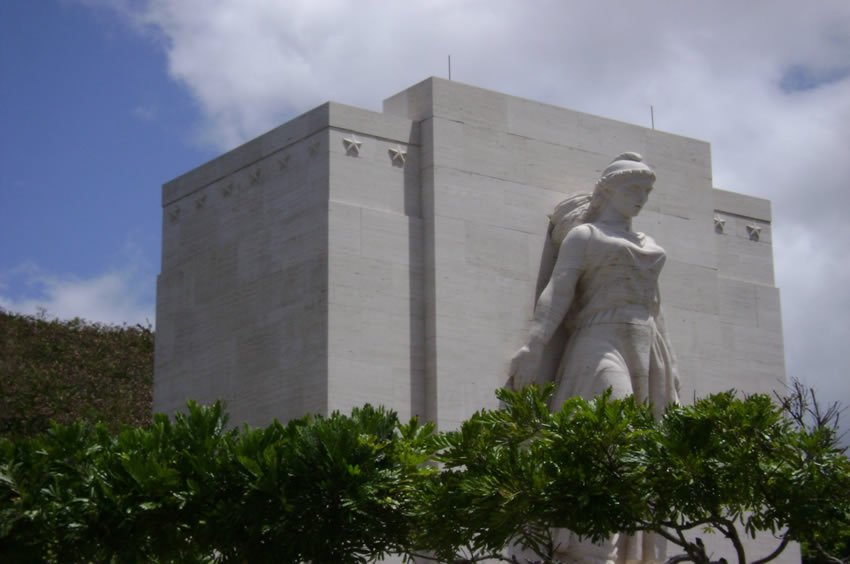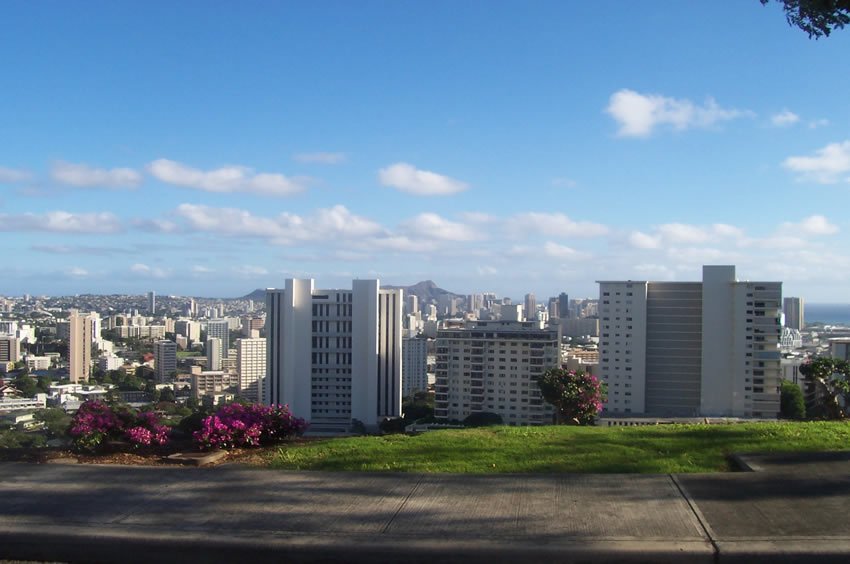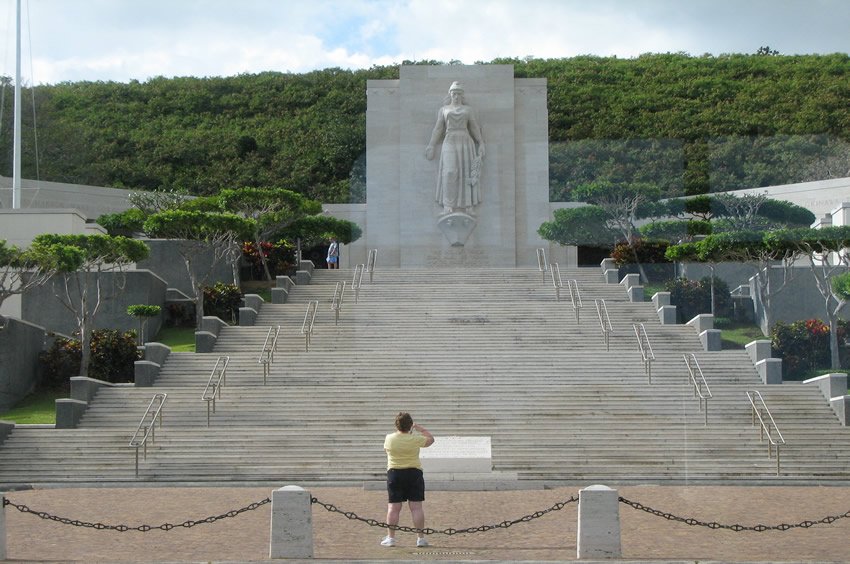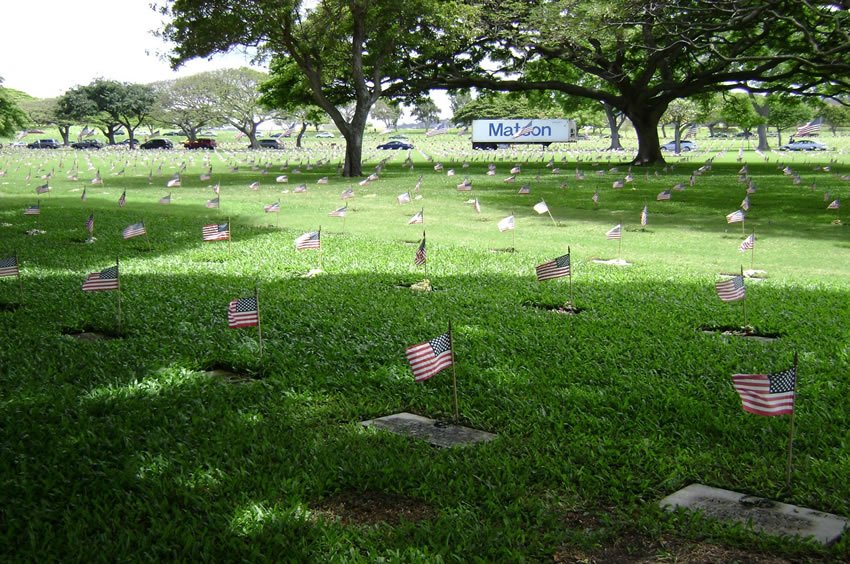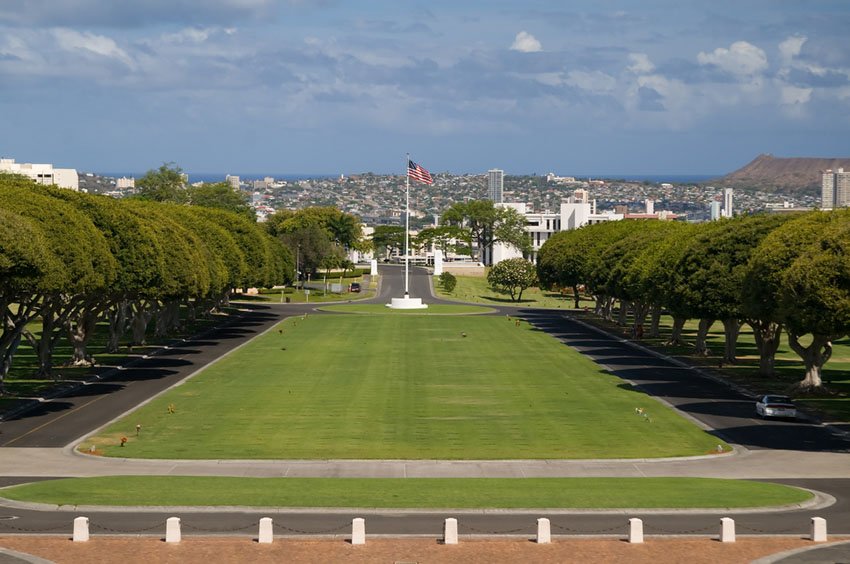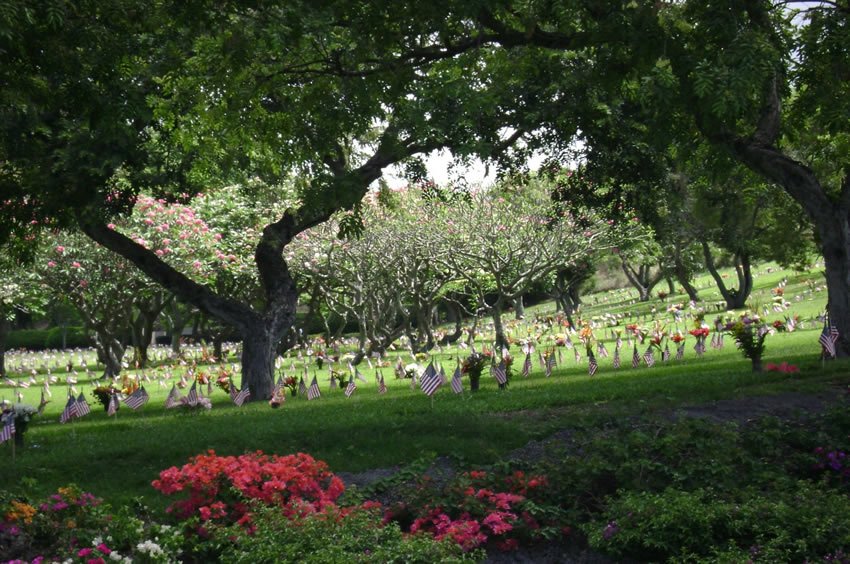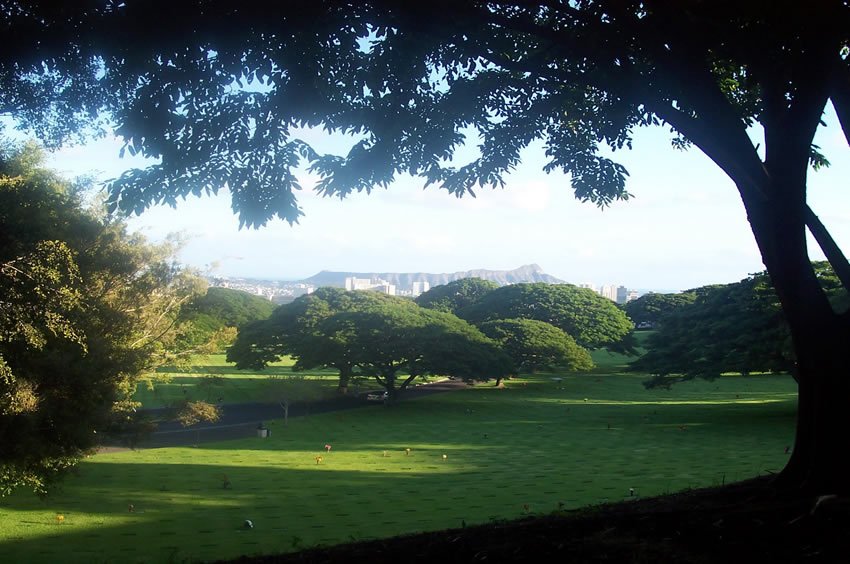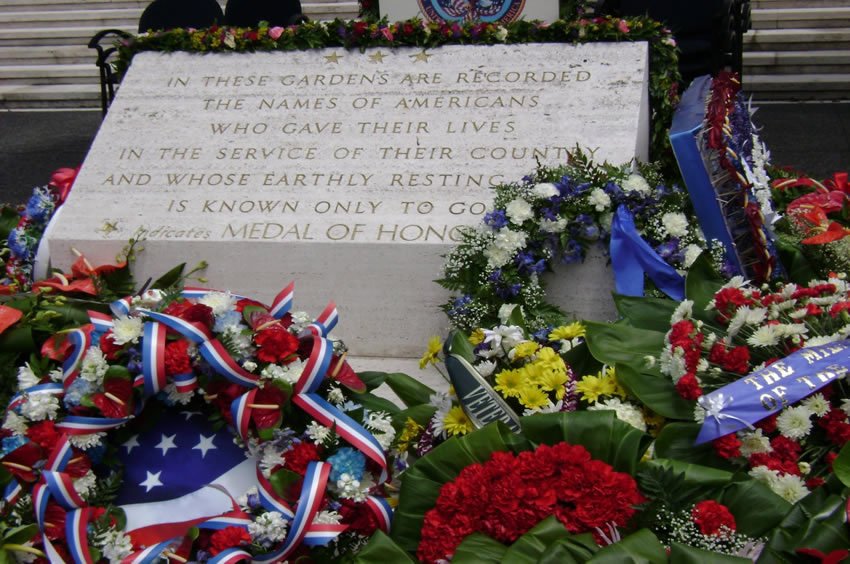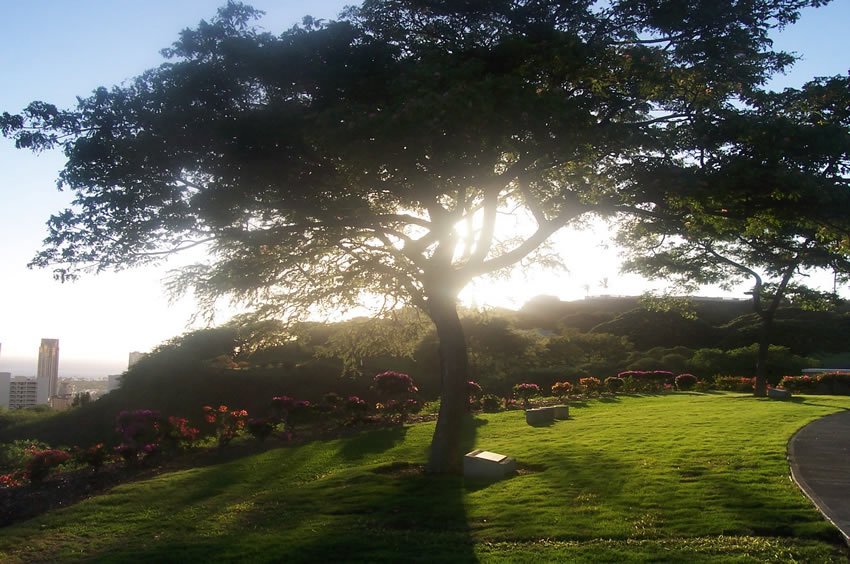Punchbowl National Cemetery

Punchbowl National Cemetery, officially known as the National Memorial Cemetery of the Pacific, is a solemn and beautifully maintained military cemetery located within an extinct volcanic crater above Honolulu. Established in 1948, it serves as the final resting place for over 25,000 service members from World War II, the Korean War, and the Vietnam War.
Punchbowl National Cemetery, Oahu
The Punchbowl National Cemetery of the Pacific, located on Oahu, Hawaii, was built in 1948 to serve as a resting place for soldiers of the American Armed Forces who lost their lives during World War II, the Korean War and the Vietnam War.
The 116-acre cemetery is situated in an extinct volcano, named Pouwaina, which means “consecrated hill” or “hill of sacrifice” in the Hawaiian language. In the past, Punchbowl was the site of “alii” (royal) burials.
Key Features of Punchbowl National Cemetery
- Historic military cemetery: Burial site of more than 25,000 U.S. service members who died in WWII, the Korean War, and the Vietnam War.
- Scenic crater setting: Located in Puowaina Crater, also known as the “Hill of Sacrifice.”
- First interments: Included 776 casualties from the December 7, 1941 Pearl Harbor attack.
- Visitor-friendly layout: Panoramic city views, memorials, maps, and peaceful walkways.
- Free walking tours: Offered Monday–Friday by the American Legion (call 808-946-6383).






Frequently Asked Questions
Who is buried at Punchbowl National Cemetery?
The cemetery is the final resting place for over 25,000 U.S. Armed Forces members, including WWII, Korean War, and Vietnam War casualties.
Where is the Punchbowl Cemetery located?
It is located at 2177 Puowaina Drive in Honolulu, inside an extinct volcanic crater just above the city.
Is it open to the public for visits and photos?
Yes, the cemetery is open to the public daily during daylight hours. Photography is allowed, but visitors should be respectful.
How do I get there?
From Ward Ave in Honolulu, take Prospect Street and follow signs to Punchbowl. You can also access it via the Pali Highway or H1.
















